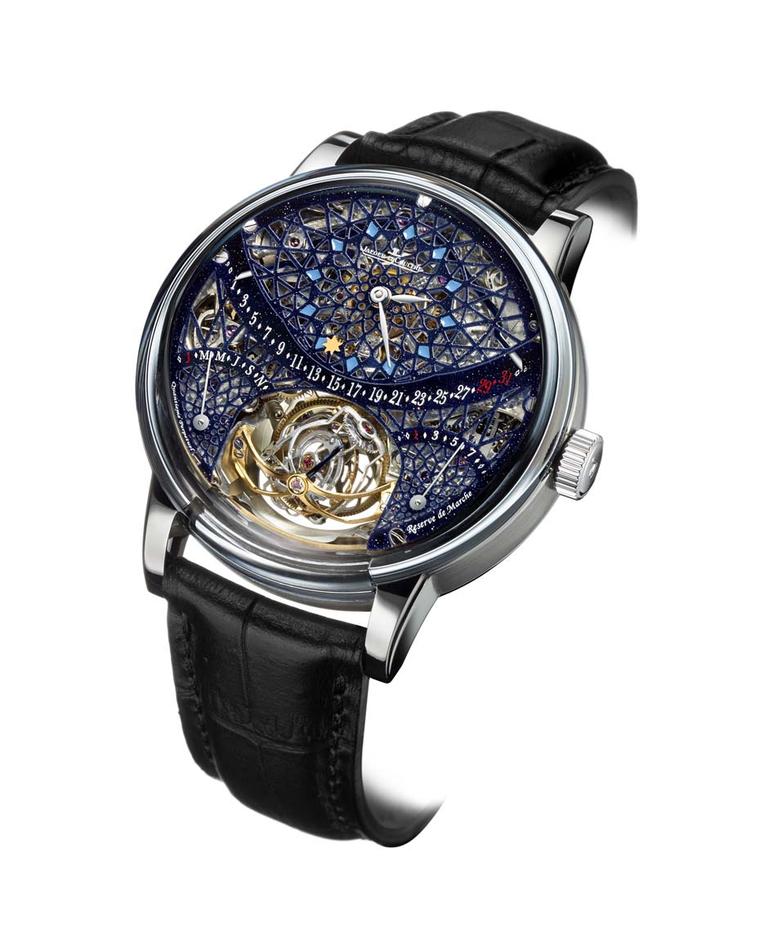By Maria Doulton
The UNESCO World Heritage Centre represents the world's cultural and natural diversity, including 47 marine sites. Jaeger-LeCoultre has been supporting UNESCO since 2008 to help protect these unique underwater treasures for future generations.
This year, Jaeger-LeCoultre is helping raise awareness of UNESCO's marine site at Glacier Bay National Park in south-east Alaska with a short video. The National Park is a dream-come-true for wilderness fanatics who like dramatic and constantly changing scenery. Covering 3.3 million acres of land, it offers scenic locations ranging from snow-covered peaks, to some of the planet's last glaciers, and from temperate rainforests and wild coastlines, to sheltered fjords.
The video follows award-winning Alaskan photographer Mark Kelly as he captures the myriad marine ecosystems that thrive at Glacier Bay on camera. First aired on 22 April to coincide with the 45th anniversary of Earth Day, and with Madison Avenue Watch Week in Jaeger-LeCoultre watches New York boutique, Kelly's spectacular pictures summon the wild beauty of this remote, scientifically important region.
Roughly 20% of Glacier Bay National Park is made up of water, with glaciers, lagoons, inlets and channels supporting marine life including humpback whales and the threatened species of Steller sea lions, as well as providing fresh water for the bears, wolves and caribou that roam its vast expanse.
Jaeger-LeCoultre's mission for the last seven years has been to raise awareness and ensure the long-term preservation of these unique marine oases.
The brand's support has enabled the creation of an international network of marine site managers who share their expertise with one another and, in the words of the narrator, "are working towards one common goal: to be the guardians of the treasures of our oceans and safeguard them durably for future generations."
The Swiss watch brand is also about future generations, and designs and equips all Jaeger-LeCoultre watches with movements that last. We need look no further than its iconic Reverso watch family, still going strong after 84 years, and the continual regeneration of classics such as the Geophysic 1958 watch, which was re-launched in 2014 to the delight of watch aficionados.
The precision instrument, designed to resist magnetism, shocks and water, was originally created for scientists of the International Geophysical Year (1957-1958) - a scientific project involving 67 countries that marked the beginning of scientific interchange between East and West, interrupted during the Cold War. Three models of the Geophysic 1958 watch in rose gold, platinum and stainless steel, measuring 38.5mm, perfectly capture the design ethos of the original model with its austere, highly legible dial. Inside these Jaeger-LeCoultre watches, a mechanical, automatic in-house movement will keep the hours, minutes and seconds running for many generations to come.
-
In 1958, to celebrate the first International Geophysical Year, Jaeger-LeCoultre created the Geophysic chronometer, embodying the scientific knowledge of the time. A high-precision instrument, the watch was designed to resist magnetic fields, shock and immersion, making it an ideal companion for crews sailing to the North Pole, where magnetic fields are particularly strong. In 2014, the brand re-edited the model in platinum, steel and rose gold.
-
As Scott Gende, senior scientific advisor of Glacier Bay, explains: “The scientific research conducted here is of the utmost importance. The zone was declared an American national monument in 1925 due to the unique possibility it affords of studying the succession of glacial periods. That is why the project leaders at Glacier Bay encourage both general research such as glaciology and the evolution of the landscape, as well as more applied studies focused on the consequences of incursions.”
-
Alaskan photographer and modern explorer Mark Kelley, who has spent more than 200 days in Glacier Bay National Park, recently joined Jaeger-LeCoultre and UNESCO on location, wearing the Geophysic 1958 watch, to capture the unique ecosystem of the region and the efforts made by scientists and project managers working to preserve the site.
-
Jaeger-LeCoultre watches has made a short video on Glacier Bay National Park, recognising the work of scientists and project managers that preserve the site. The video was screened at Jaeger-LeCoultre’s New York boutique on Earth Day 2015. Scientists and mammal marine biologists have played a fundamental role in the preservation of endangered species in the park.



















